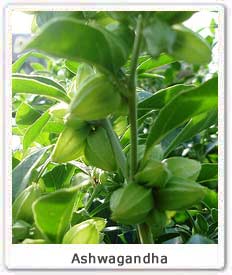SHAGBARK HICKORY
scalybark hickory
Carya ovata (Miller) Koch
|
| Shagbark hickory is the best known and most valuable of the hickories in this state. It is common in deep, moist soils throughout New York though rare in the higher Catskills and Adirondacks, and is not reported from the pine barrens of Long Island. In the forest it is a tall straight-branched tree but in open fields and along hedgerows where it often grows it usually forks near the ground into stout ascending limbs. The wood is very heavy, tough, elastic, close-grained, and is used chiefly for handles, vehicles, agricultural implements, and fuel. The fruit is important for wildlife. |
| Bark - light gray in color, smooth and seamy, becoming shaggy with age and peeling off into long strips which are loose at both ends and attached in the middle, thus giving rise to the name "shagbark hickory."Twigs - covered with numerous light dots, extremely tough and pliable, reddish brown to gray in color. Winter buds - large, ovate, blunt-pointed, with papery, dark brown, loose bud scales, the outer scales much darker, persistent through the winter; terminal bud usually more than 1/2 inch long. Leaves - alternate compound, 8 to 14 inches long, with 5 to 7 leaflets, the 3 upper ones being by far the largest. Fruit - a smooth, white, 4-angled nut, enclosed in a thick, round husk that splits into 4 sections as the nut falls after heavy autumn frosts. Kernel - large, sweet. Distinguishing features - large terminal bud; 5 to 7 leaflets, outer 3 much larger; bark peeling in long plates. |
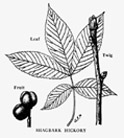
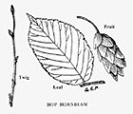
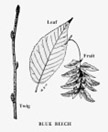
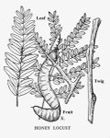

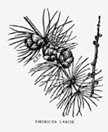

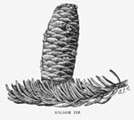

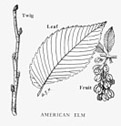
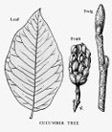
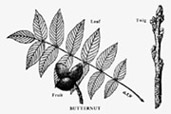

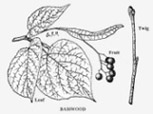

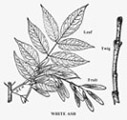
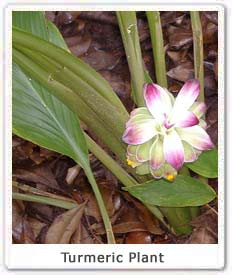 one meter long. Flowers of the turmeric appear on a spike like the stalk. Its flowers are yellow white in colour. They are sterile and donot produce viable seed. The lamina is green above and pale green below, and is 30 -40 cm long and 8 -12 cm wide. Approximately 30 flowers are produced in a spike. Inflorescence is a central spike of 10 -15 cm in length. Its pant looks like the ginger pant.
one meter long. Flowers of the turmeric appear on a spike like the stalk. Its flowers are yellow white in colour. They are sterile and donot produce viable seed. The lamina is green above and pale green below, and is 30 -40 cm long and 8 -12 cm wide. Approximately 30 flowers are produced in a spike. Inflorescence is a central spike of 10 -15 cm in length. Its pant looks like the ginger pant.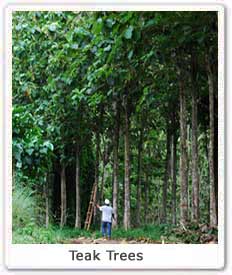 with the uneven texture, medium lusture and the oily feel. The upper surface of the tree is rough to touch and the inner surface has hairs. The fruit is enclosed by the bladder like calyx, which is light brown, ribbed and papery.
with the uneven texture, medium lusture and the oily feel. The upper surface of the tree is rough to touch and the inner surface has hairs. The fruit is enclosed by the bladder like calyx, which is light brown, ribbed and papery.
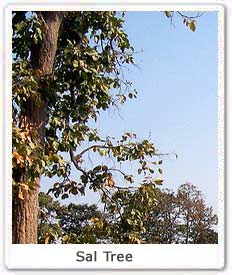 Cultivation methods : Sal tree requires well drained, moist and sandy loam soil. It can grow in type type of temperature. It is mostly propagated through cuttings. In dry conditions it sheds it leaves from February to March. New leaves appear in the month of April and May. The flowers mature into fruit in summers and the seeds ripen in June -July.
Cultivation methods : Sal tree requires well drained, moist and sandy loam soil. It can grow in type type of temperature. It is mostly propagated through cuttings. In dry conditions it sheds it leaves from February to March. New leaves appear in the month of April and May. The flowers mature into fruit in summers and the seeds ripen in June -July.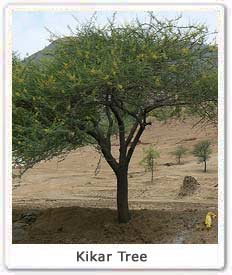 Other Species : Acacia campbellii, Acacia dekindtiana , Acacia eburnea sensu auct, Acacia horrida sensu auct, Acacia inconflagrabilis, Acacia karoo, Acacia minutifolia, Acacia natalitia, Acacia pseudowightii, Acacia roxburghii, Mimosa eburnea are the other realted species of Kikar.
Other Species : Acacia campbellii, Acacia dekindtiana , Acacia eburnea sensu auct, Acacia horrida sensu auct, Acacia inconflagrabilis, Acacia karoo, Acacia minutifolia, Acacia natalitia, Acacia pseudowightii, Acacia roxburghii, Mimosa eburnea are the other realted species of Kikar.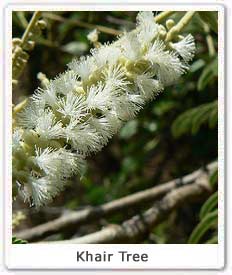 in the month of June -August. Fruits ripen in January to March and remain in the tree for long. The young parts are dark brown to purple in colour. The tree has tough texture from outside.
in the month of June -August. Fruits ripen in January to March and remain in the tree for long. The young parts are dark brown to purple in colour. The tree has tough texture from outside.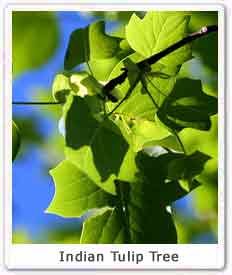
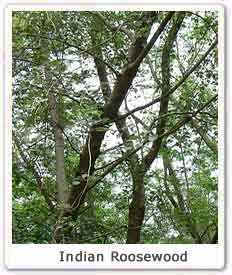 Description : Indian Rosewwod is a erect deciduous tree. It grows to the height of 25 meter and 2-3 meter in diameter. It has leathery leaves which are up to 15 cm long. The flowers are whitish pink in colour. Its crown is oval in shape. The fruit is brown and pod like in shape. The fruit is dry and hard. The sapwood is white to pale brown in colour and the heartwood is golden to dark brown in colour.
Description : Indian Rosewwod is a erect deciduous tree. It grows to the height of 25 meter and 2-3 meter in diameter. It has leathery leaves which are up to 15 cm long. The flowers are whitish pink in colour. Its crown is oval in shape. The fruit is brown and pod like in shape. The fruit is dry and hard. The sapwood is white to pale brown in colour and the heartwood is golden to dark brown in colour.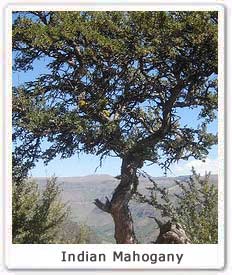 in colour. Both the male and the female flowers are produced on the same plant. The bark is smooth dark brown in colour. The leaves are pinnate which are 12 -25 cm long, with four to eight leaflets.
in colour. Both the male and the female flowers are produced on the same plant. The bark is smooth dark brown in colour. The leaves are pinnate which are 12 -25 cm long, with four to eight leaflets.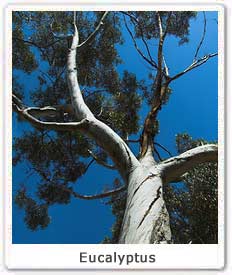 flowers are cream in colour. The appearance of its bark varies with the age of the tree. Its bark consists of long fibers and can be can be pulled off in long pieces. Stems of the seedlings and coppice shoots are quadrangular. Flowers are in cymose panicles. The fruit is a capsule.
flowers are cream in colour. The appearance of its bark varies with the age of the tree. Its bark consists of long fibers and can be can be pulled off in long pieces. Stems of the seedlings and coppice shoots are quadrangular. Flowers are in cymose panicles. The fruit is a capsule.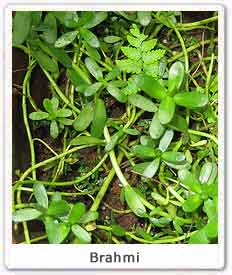 and sharp at apex.
and sharp at apex.